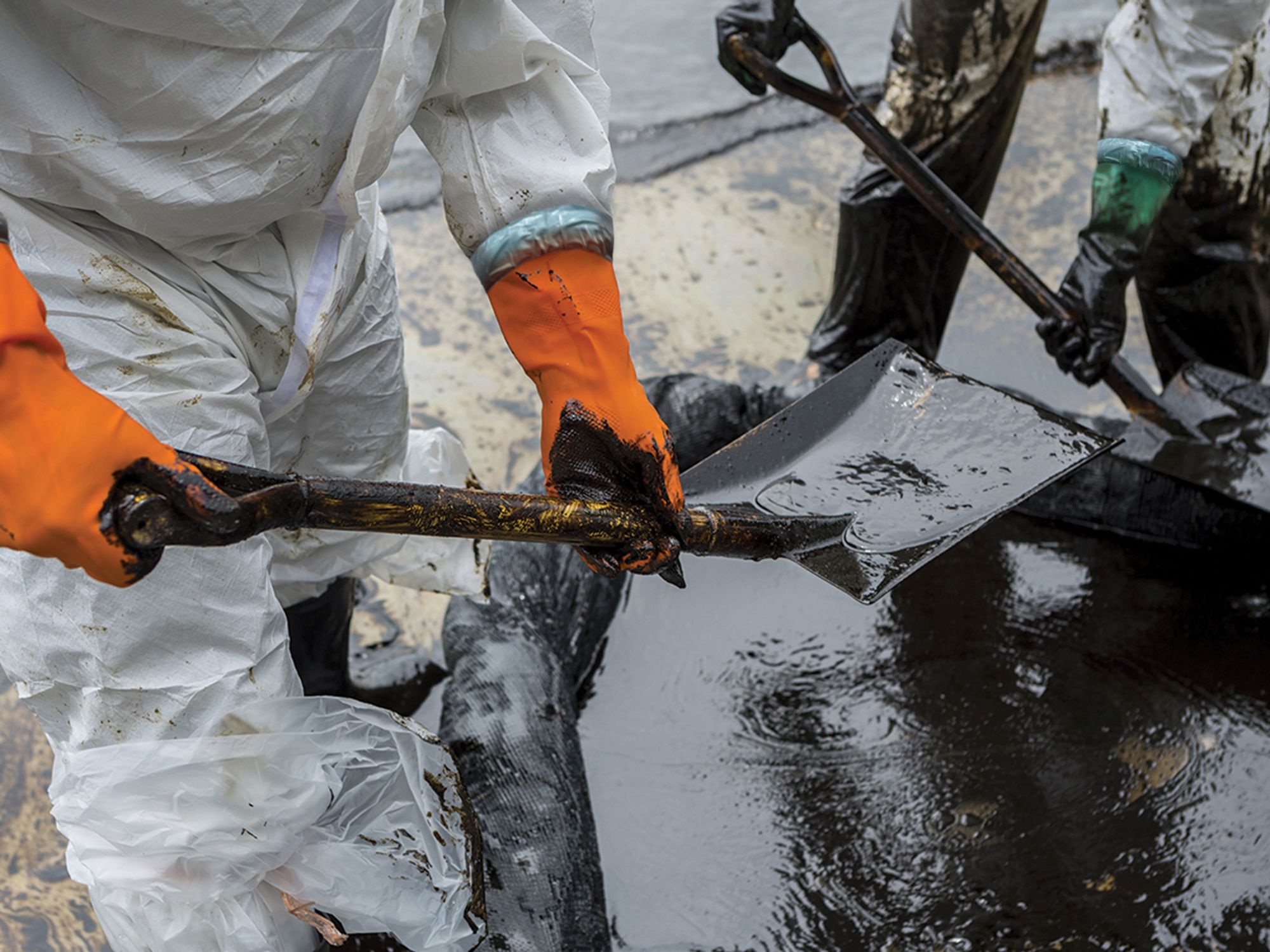Releases that require emergency response regardless of circumstances

- Some releases pose a large enough threat to health and safety that they automatically require an emergency response.
- When planning emergency response, employers should use a reasonably predictable worst-case scenario.
Some releases of hazardous substances pose a sufficient threat to health and safety that they require an emergency response no matter what. An employer must determine the potential for an emergency in a reasonably predictable worst-case scenario and plan response procedures accordingly. These are “anticipated emergencies” as mentioned in the emergency response plan provision at subparagraph (q)(1) of 29 CFR 1910.120 and 1926.65.
Example situation: Motor carrier spill
A motor carrier transporting hazardous materials has an accidental release. The product cannot be contained by employees in the immediate vicinity or be cleaned up with absorbent. The motor carrier’s employees evacuate the area and call for outside help, as instructed by the employer. In this instance, if a spill of a hazardous substance occurs and an employer instructs all employees to evacuate the danger area, then the employer may not be required to train those employees under 1910.120.
However, the ability to decide whether a spill is an incidental spill or one requiring an emergency response requires training. Also, any employees who are expected to become actively involved in an emergency response due to a release of a hazardous substance are covered by 1910.120 and must be trained accordingly.
Note: The Occupational Safety and Health Administration (OSHA) has limited jurisdiction for over-the-road vehicle operation. The Hazardous Waste Operations and Emergency Response (HAZWOPER) Standard may not cover the vehicle operator in all circumstances involving spills while the material is on the vehicle or otherwise “in transportation.” An operator or any other employee who becomes actively involved in an emergency response then becomes an emergency responder and is covered by 1910.120(q).
Example situation: Ammonia release
OSHA says another example of a situation that would generally necessitate an emergency response is the release of anhydrous ammonia from a refrigeration unit. Employers must determine if there is a potential for release of ammonia in their facility that could result in an emergency situation. Anhydrous ammonia can produce severe health effects, depending upon the degree of exposure.
Example situation: Fire department call
Another situation that would likely require an emergency response is an emergency call to the fire department reporting a suspected release of a hazardous substance. The fire department should not knowingly dispatch a firefighter trained only under the Hazard Communication Standard or only to the “awareness level” to respond to a hazardous substance emergency.
For example, an emergency call involving the discovery of three 55-gallon drums on the side of a road that may be connected to a nearby methamphetamine laboratory would classify the situation as a potential emergency response requiring appropriately trained personnel.
Other emergency response examples
An emergency response includes, but is not limited to, the following situations:
- The response comes from outside the immediate release area.
- The release requires evacuation of employees in the area.
- The release poses, or has the potential to pose, conditions that are immediately dangerous to life or health (IDLH).
- The release poses a serious threat of fire or explosion (exceeds or has the potential to exceed the lower explosive limit or lower flammable limit).
- The release requires immediate attention because of imminent danger.
- The release may cause high levels of exposure to toxic substances.
- There is uncertainty about whether the employees in the work area can handle the severity of the hazard with the PPE and equipment that has been provided, and the exposure limit could easily be exceeded.
- The situation is unclear, or data are lacking on important factors.
